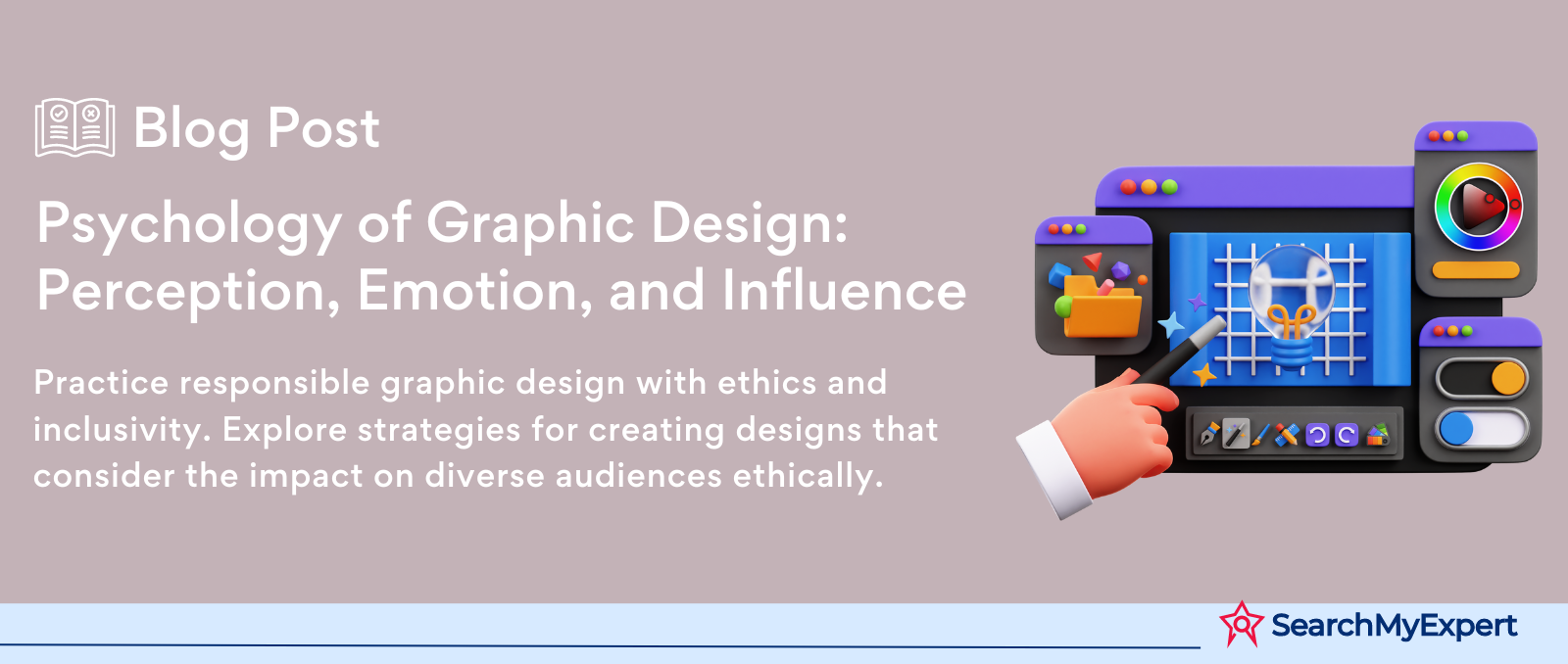Responsible Graphic Design: Ethical Practices and Inclusive Impact

Graphic Design and Visual Psychology
Defining Graphic Design and its Role in Communication
Graphic design is an artistic and professional discipline that focuses on visual communication and presentation. It's the art of combining text, images, and symbols to convey messages, ideas, and emotions. This craft is crucial in various industries, from advertising to web design, as it helps businesses and individuals communicate effectively with their target audience. Graphic design is not just about creating aesthetically pleasing visuals; it's about solving problems and communicating ideas in a way that is both engaging and easy to understand.
Unpacking the Concept of "Visual Psychology"
Visual psychology delves into how we perceive, interpret, and interact with visual information. It studies the psychological implications of how visual elements like color, shape, and layout can influence our emotions and behavior. This field is particularly relevant to graphic design, as understanding visual psychology allows designers to create more impactful and effective designs.
Key Areas of Psychology in Graphic Design
There are several key areas of psychology that are particularly relevant to graphic design:
- Perception: How we interpret visual elements based on our previous experiences and cultural backgrounds.
- Attention: The way design can guide or divert the viewer's focus.
- Memory: Understanding how certain designs can be more memorable than others.
- Emotion: The impact of visual design on the viewer's mood and feelings.
- Behavior: How design can influence the actions of the viewer, such as persuading them to make a purchase.
Perception and Attention in Graphic Design
Principles of Visual Perception
Visual perception is the process by which our brain interprets and makes sense of visual stimuli. In graphic design, understanding these principles is key to creating effective and compelling designs. Some core principles include:
- Figure-Ground Perception: This principle refers to our ability to distinguish a figure from its background.
- Similarity and Contrast: These principles help in grouping similar elements or making an element stand out.
- Closure: Our mind's tendency to see incomplete shapes as complete.
Utilizing Gestalt Principles and Visual Hierarchy
Gestalt principles are fundamental in graphic design. They explain how humans tend to organize visual elements into groups or unified wholes when certain principles are applied, such as proximity, similarity, and continuation. Applying these principles helps designers create cohesive, balanced, and effective designs.
Visual hierarchy is another crucial concept in design. It involves arranging elements in a way that signifies their importance, guiding the viewer's attention to where it's most needed. This can be achieved through variations in size, color, contrast, and placement.
Impact of Color Theory and Symbolism
Color theory is a cornerstone of graphic design. Colors have the power to convey messages and evoke emotions. Understanding color psychology helps designers choose palettes that align with the message and mood they wish to convey. Similarly, symbolism through colors and imagery can resonate with viewers on a deeper level, often tapping into cultural and personal associations.
Graphic design is a powerful tool in communication, heavily influenced by principles of visual psychology. By understanding how viewers perceive and interact with visual elements, designers can create more effective and engaging designs.
Memory and Learning in Graphic Design
Enhancing Memory and Learning Through Design
Graphic design plays a pivotal role in enhancing memory and learning. Effective design can make information more memorable and easier to understand. This is especially important in educational materials, marketing, and user interfaces, where retaining information is key.
Role of Visual Metaphors and Storytelling in Memory Retention
- Visual Metaphors: These are powerful tools in graphic design. A visual metaphor uses an image to symbolize a different concept or idea, making the underlying message more memorable. For example, using a lightbulb to represent an idea.
- Storytelling: This involves crafting a narrative around information. Storytelling in design helps in creating a connection with the audience, making the information more relatable and easier to remember.
Repetition and its Impact on Memory
Repetition is a fundamental principle in learning and memory. In design, repeating key elements or messages can reinforce the message and increase recall. This can be done through consistent branding, recurring themes, or visual motifs.
Design's Impact on Cognitive Processes
Graphic design influences cognitive processes like decision-making and problem-solving. Well-designed visuals can simplify complex information, making it easier for the brain to process and understand. This can aid in quicker decision-making and more effective problem-solving.
Emotion and Motivation in Graphic Design
Evoking Emotions Through Graphic Design
Graphic design has the power to evoke a wide range of emotions. This emotional impact can be pivotal in influencing viewer behavior, whether it's motivating a purchase decision, inspiring social change, or building brand loyalty.
Using Color, Imagery, and Typography for Emotional Responses
- Color: Different colors can evoke different emotions. For example, red can signify passion or urgency, while blue can evoke trust and calm.
- Imagery: The choice of images in a design can significantly impact the viewer's emotional response. Pictures that evoke nostalgia, joy, or even sadness can create a powerful connection.
- Typography: The style, size, and arrangement of text can also influence emotions. For example, bold, large fonts may convey strength and confidence, while handwritten fonts might feel more personal and intimate.
Techniques for Persuasion, Motivation, and Engagement
Graphic design can be strategically used to persuade and motivate viewers. This includes creating compelling calls-to-action, using persuasive imagery, and designing with the user's needs and emotions in mind. Engaging designs that resonate with the viewer on an emotional level can be highly effective in driving desired actions.
Graphic design is a powerful tool in shaping memory, learning, emotion, and motivation. By leveraging visual metaphors, storytelling, color, imagery, and typography, designers can create impactful designs that not only communicate messages effectively but also influence viewer behavior.
Cultural Considerations in Graphic Design
Influence of Cultural Background on Design Perception
Graphic design doesn't exist in a vacuum; it's deeply influenced by cultural contexts. Cultural background and social norms play a significant role in how designs are perceived and interpreted. Colors, symbols, and even typography can have different meanings in different cultures. For instance, while white is associated with purity in some cultures, it symbolizes mourning in others.
The Importance of Cultural Sensitivity
Cultural sensitivity in graphic design is about acknowledging and respecting these cultural differences. It's crucial for designers to be aware of these nuances to avoid miscommunication and to ensure that their designs are appropriate and effective in different cultural contexts.
Adapting Designs for Different Cultural Contexts
- Research: Understand the cultural norms and values of the target audience.
- Adapt Colors and Symbols: Be aware of the cultural connotations of colors and symbols.
- Language and Typography: Consider the language and script's visual impact in the design.
- Imagery: Use culturally relevant and respectful imagery.
Usability and User Experience in Graphic Design
Visual Hierarchy and Information Architecture
Visual hierarchy and information architecture are foundational in creating user-friendly interfaces. They guide users through the content in an intuitive manner, making it easy to find what they are looking for.
- Visual Hierarchy: This involves arranging elements in a way that reflects their importance, guiding the user's eye through the design.
- Information Architecture: This refers to organizing and structuring content in a logical and accessible way.
Enhancing Usability through Graphic Design
Good graphic design is key to enhancing usability. It involves:
- Clarity: Making sure information is easy to read and understand.
- Consistency: Using consistent design elements to create a cohesive experience.
- Feedback: Designing interactive elements that give users feedback, like buttons changing appearance when clicked.
Accessibility and Inclusivity in Design
Designing for diverse audiences means ensuring accessibility and inclusivity. This involves creating designs that are usable by people with various abilities and disabilities. For example:
- Color Contrast: Ensuring there is sufficient contrast for users with visual impairments.
- Alternative Text: Providing text alternatives for images for screen reader users.
- Simple Navigation: Ensuring that navigation is straightforward, even for users with limited mobility.
Ethics and Responsibility in Graphic Design
Ethical Considerations in Design
In the realm of graphic design, ethics goes beyond mere aesthetics. Designers hold a significant responsibility as their work can influence public opinion, behaviors, and social norms. Ethical considerations include:
- Avoiding Harmful Stereotypes: Designers should be mindful of not perpetuating harmful stereotypes or biases. This involves a conscious effort to represent diversity and inclusivity in their work.
- Steering Clear of Manipulative Tactics: Ethical design means not using deceptive or manipulative tactics. This includes being transparent and honest in advertising and not exploiting psychological vulnerabilities of the audience.
Promoting Social Good and Environmental Sustainability
Responsible graphic design can be a powerful tool for social change. Designers have the opportunity to use their skills to promote social good and environmental sustainability.
- Social Good: This involves creating designs that raise awareness about important issues, promote positive social change, or contribute to charitable causes.
- Environmental Sustainability: Designers can also contribute to sustainability by choosing eco-friendly materials and processes, and by promoting sustainable practices through their designs.
Encouraging Long-Term Impact Consideration
Designers should consider the long-term impact of their work on society. This involves:
- Future-Oriented Thinking: Understanding how their designs will affect future generations.
- Cultural Impact: Considering the cultural implications and how their work influences societal norms and values.
- Technological Changes: Being aware of how technological advancements might change the way their designs are used or interpreted.
Conclusion
The psychology of graphic design is a multifaceted and profound field that goes beyond aesthetic appeal. It encompasses understanding human perception, emotion, memory, and behavior. This article has explored how cultural nuances and ethical considerations play a vital role in creating impactful designs. From leveraging visual psychology to enhance memory and learning to embrace ethical responsibility for social good, graphic design is a powerful tool in shaping human experiences and societal norms.
As designers and enthusiasts, embracing these psychological insights not only elevates the quality of our work but also ensures it is responsible, inclusive, and resonates deeply with diverse audiences. Remember, every design choice has the potential to influence and inspire. Let’s harness this power thoughtfully and creatively to make a positive and lasting impact in the world of design.
Revolutionize your visual identity with our Graphic Design Company.
share this page if you liked it 😊
Other Related Blogs

Mastering Docker for App Development: A Comprehensive Guide to Benefits, Use-Cases, and Alternatives
STAY UP TO DATE
GET PATH'S LATEST
Receive bi-weekly updates from the SME, and get a heads up on upcoming events.
Contact Us











